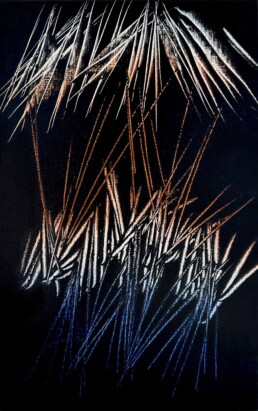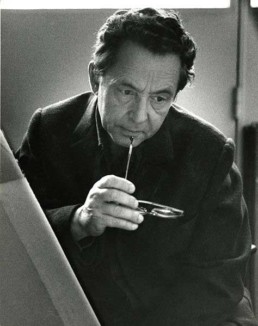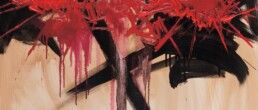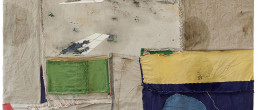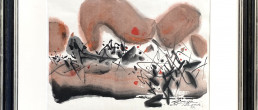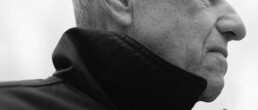Hans Hartung
1904 (Leipzig) - 1989 (Antibes)
Biography
Born in 1904 in Leipzig, Hans Hartung frequented the Dresden school until 1924, and was passionate about Rembrandt, Goya, Frans Hals, Le Greco, and German Expressionists. He freely copied certain paintings and simplified the composition while retaining only the coloured masses. From 1922 onwards, he reaches abstraction in a seriy of watercolour works, and in the following years works with fusains and drawing. Between 1924 and 1925, Hartung studies philosophy and art history at Leipzig. He attends lectures on Kandinsky and on the occasion of the Universal Exhibition ; he discovers French art from Impressionism to Cubism.
He lives in Paris until 1931. After the death of his father and against the backdrop of the rising Nazi party, Hartung leaves Germany. He leaves a few paintings to the gallery Jeanne Bucher in Paris. Without money, he resettles in Paris in 1934, and then returns to Berlin in Germany. Refusing to accept the Nazi regime, he returns to Paris where he links himself with Jean Hélion and Henri Goetz, and he meets Kandinsky, Mondrian, Mirò. Facing money problems, his wife’s illness, their subsequent divorce, and his passport being seized by the German Embassy, Hartung benefits from the hospitality of Goetz and works in the studio of the sculptor Julio González. In 1939, he enlists himself with the volunteers against Hitler, and marries Roberta González, daughter of the sculptor. Mobilized in December, he is sent to Indochina then North Africa. Demobilized, with his he takes refuge with the González family in the Lot. After the death of Julio González in 1942 and the occupation of France, Hartung moves to Spain in 1943. He is then incarcerated, and placed in a concentration camp for seven months. Badly injured during the attack of Belfort in November 1944, he has his right leg amputated.
Upon his return to Paris in 1945, where he is helped by Calder, he becomes naturalised French in 1946, and honoured with the War Cross between In the following years, Hartung participated in many exhibitions and began to receive acclaim from several art critics. From 1949 on, he completes several personal exhibitions and meets Schneider, Soulages, Mathieu, Baumeister…
In 1953, Hans Hartung remarries Anna-Eva Bergman, back from Norway, and divorces Roberta Gonzalez. Multiplying his painting exhibitions, engravings and lithographies ; he receives in 1960 the International Grand Prize for painting from the In 1968, Hartung builds a house near Antibes with Anna-Eva. They lived there since 1972. The works of Anna-Eva and Hans are exposed in 2006 by the Musée du Luxembourg in Paris for the exhibition “L’envolée Lyrique”. Hans Hartung died in 1898 in his house of Antibes, which has become the Hartung-Bergman Foundation.


